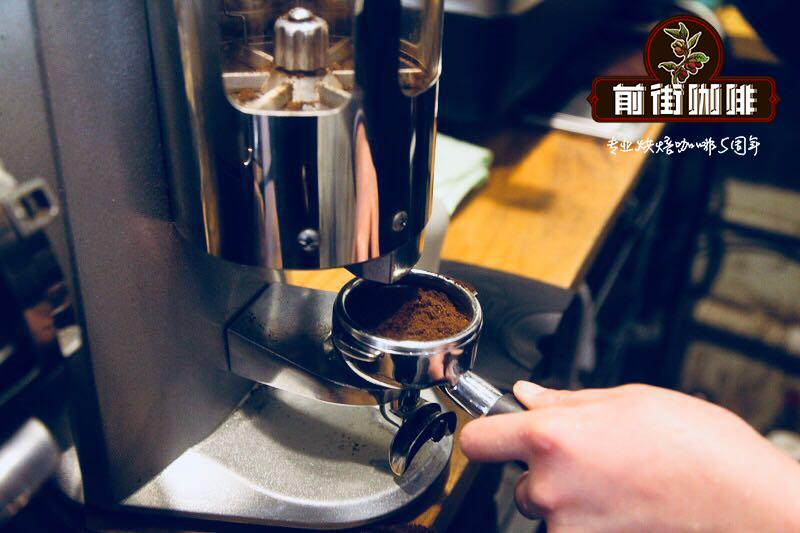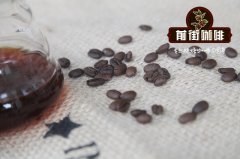Do anaerobic coffee beans taste good? what is the flavor of Costa Rican coffee treated by anaerobic treatment?

Costa Rica is known for its leading position in innovative coffee processing methods. Especially famous for honey processing, manufacturers and factories all over the country are actively looking for innovative products that can improve the flavor of coffee.
Recently, a new treatment called anaerobic treatment has turned around and made the cup tester say, "what's the secret to the unique taste of this coffee?" This approach is different from the one we usually see, and Luis Eduardo Campos from SanRam ó nde Alajuela works to improve the process at his factory Cordillera de Fuego.
Usually, anaerobic means anoxic. You might ask, how can coffee be used to do this when the fermentor is usually located in an open space? A: put the coffee in a sealed stainless steel container. In addition to producing new and unexpected flavors, the anaerobic process provides a high degree of control over sugar, temperature, pressure, pH and time.
Before you understand how it works, you need to review some facts. First of all, the taste of coffee fruit is concentrated in fruit juice, not in seeds. Coffee cherries are the fruits of shrubs and contain sugar in syrup. The concentration of sugar and seasoning depends on the type of fruit, maturity and soil type.
Now let's continue the process. First, remove the coffee from the pulp, and then put the seeds into the fermentor. The separated mucus is then tightly packed into a gelatinous consistency and added to the fermentor until the entire parchment is covered. With the beginning of fermentation, the content of O2 decreases, while CO2 increases, resulting in pressure in the fermentor. The process lasts 18 to 23 hours-enough to consume mucus, but not long enough to produce alcohol. After 15 hours, the pH value needs to be continuously controlled to determine the way of fermentation.
The pressure generated by CO2 allows the smell of coffee juice to be injected into the parchment. When the fermentation is over, open the tank (be careful! Because of high pressure). Then dry the coffee for at least 4 hours, otherwise the fermentation may continue and the flavor may change.
We use two different types of coffee from two different regions in our Anaerobico Cordillera del Fuego: Tarraz ú and West Valley (from Zarcero to be exact). Both coffees are grown between 1400 and 1500 MLS; Kaddura and Kaduai. This sounds like very typical Costa Rican coffee, doesn't it? That's where the anaerobic process starts to work. The creamy texture, floral and cinnamon aromas of this coffee will immediately attract your attention. It also has excellent acidity. These complex notes are directly related to the fermentation process.
Costa Rica Cordillera del Fuego anaerobic 2020
Variety: Kaduai, Kaddura
Treatment method: carbon dioxide impregnation treatment
Taste: cinnamon, brown sugar, spices, caramel, red fruit
Important Notice :
前街咖啡 FrontStreet Coffee has moved to new addredd:
FrontStreet Coffee Address: 315,Donghua East Road,GuangZhou
Tel:020 38364473
- Prev

Is Colombian High altitude Coffee better? introduction to Guamo Manor in Tolima Gaetanya
Gaetanya Guamo Manor, High altitude region of Colombia: Chateau Guamo, Tolima, Colombia (Finca El Guamo) producer: Jose Ramiro#012 altitude: 1930m Variety: Kaddura treatment: washing Flavor: ripe plums, Sweet Apricot, Honey, Chocolate Flavor production areas Colombia has always been very high
- Next

Tips for extracting espresso Pay attention to these details to help you make espresso
When it comes to espresso extraction, many people pay attention to less important details, but that's because they're all part of the process. It is important, however, to distinguish what is important and what is unimportant. The less important details are, first of all, what we're looking at in extraction.
Related
- Detailed explanation of Jadeite planting Land in Panamanian Jadeite Manor introduction to the grading system of Jadeite competitive bidding, Red bid, Green bid and Rose Summer
- Story of Coffee planting in Brenka region of Costa Rica Stonehenge Manor anaerobic heavy honey treatment of flavor mouth
- What's on the barrel of Blue Mountain Coffee beans?
- Can American coffee also pull flowers? How to use hot American style to pull out a good-looking pattern?
- Can you make a cold extract with coffee beans? What is the right proportion for cold-extracted coffee formula?
- Indonesian PWN Gold Mandrine Coffee Origin Features Flavor How to Chong? Mandolin coffee is American.
- A brief introduction to the flavor characteristics of Brazilian yellow bourbon coffee beans
- What is the effect of different water quality on the flavor of cold-extracted coffee? What kind of water is best for brewing coffee?
- Why do you think of Rose Summer whenever you mention Panamanian coffee?
- Introduction to the characteristics of authentic blue mountain coffee bean producing areas? What is the CIB Coffee Authority in Jamaica?

